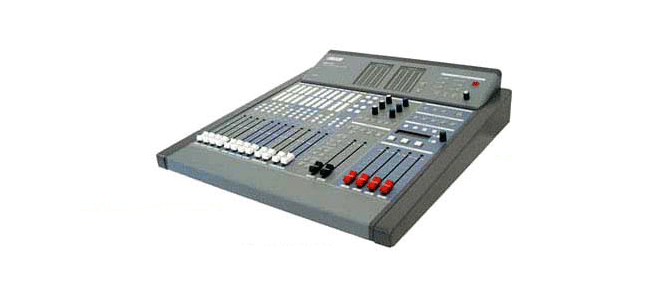| DB-16P Digital Production Audio Mixing Console |
| This product has been discontinued. |
|
Features
|
 |
The Otari DB-16P is a small size digital audio mixing console designed for video editing environments. As a stand-alone mixing console, the DB-16P provides various audio signal editing functions. However, by connecting to a video editor having a serial mixer terminal that supports ESAM II protocol, an excellent audio-video editing environment controllable from the editor can be constructed. (ESAM = Editing Suite Audio Mixer)
- AES/EBU Digital Input/Output: AES/EBU digital audio signal format is supported: the DB-16P connects to video players in the digital domain to maintain original audio signal quality.
The DB-16P also has a 2-channel line input for receiving analog audio signals.
- I/O Configuration Optimized for Two-to-One Editing: Output signals from two video players (4-channel digital x 2) and two stereo audio signals (selected from two digital stereo inputs + one analog stereo input) can be mixed and fed to one video recorder (4-channel digital).
- Compressor and 3-Band EQ on Each Input Channel: Each input channel has a compressor, a 3-band equalizer, and a channel fader with 0.1 dB resolution.
- Fader Link Function: To carry the level differences in the video player's four output channels precisely to the recorder, the DB-16P can link the faders in the same input group. Any channel in the input group can be used as a group fader.
- Channel Parameter Copy: Channel parameters such as equalizer, compressor, input delay can be copied to other channels. By combining this function with the Fader Link function, the four input channels can be mixed using identical parameter settings.
- 99 Snapshots: Channel settings can be saved as snapshots (max. 99) and can be loaded for every 4 channels. The snapshot data can be saved to an external PC via the serial communication terminal. The data can then be edited on the PC and sent back to the console.
- Three Transition Modes
Manual: A crossfade is manually done by using two transition faders.
Normal: After setting a duration (length of a transition) and transition curve, a crossfade is executed by pressing the START button.
Auto: After setting durations for fade-in and fade-out signals (it is possible to introduce an offset in their start times) and selecting a transition curve, a transition is automatically executed by the control signal sent from the editor. Remote control signals from the editor are accepted in Auto mode only.
N.B. The maximum duration setting is about 3900 frames (= approx. 130 s @ 30 fps, approx. 156 s @ 25 fps).
- 40-segment x 4-channel LED bargraph level meter with Peak and Clip Hold function
- Mountable in a standard 19" rack - Rack mount brackets are included in the standard accessory kit
|
|
 home
home home
home